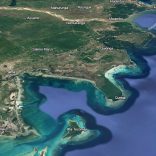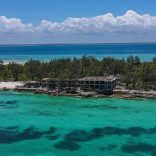Mozambique: Nine buffaloes found dead in mysterious circumstances
Mozambique: 400 animals introduced into Banhine National Park

All photos: ANAC
Banhine National Park, in the southern Mozambican province of Gaza, has entered a new phase of wildlife revival with the introduction of 400 animals of various species, described by the park administrator, Abel Nhabanga, as “a historic operation that marks the beginning of a plan to restore local ecosystems”.
By next year, the park is expected to receive approximately 1,100 animals from other conservation areas.
According to Nhabanga, interviewed by AIM, the initiative is part of the reintroduction of hundreds of animals and new investments to make the park one of the most promising conservation areas in southern Mozambique.
“We are living in a historic moment. Banhine was once known as the Little Serengeti, for its extraordinary diversity of habitats and wildlife. Today, we are taking the first steps to restore that lost glory”, he said.
In recent years, the park has been consolidating itself through the construction of new infrastructure, ranger training, and community development. In 2024 alone, 35 new rangers were hired, including 17 women, strengthening the protection and patrolling of the most sensitive areas. Aerial surveys conducted in 2023 confirmed the return of elephants, buffalo, and predators, signalling the rebirth of the ecosystem.



Despite the progress, significant challenges remain due to water scarcity, typical of the region’s semi-arid climate. “We don’t have permanent rivers. Therefore, we need to drill boreholes and build dams to ensure the animals’ survival during the dry season”, said Nhabanga.
He believes that another focus is sustainable tourism, seen as a driver of revenue and social inclusion. “The increase in wildlife will attract more tourists, especially domestic ones, and this will bring direct benefits to the communities, which receive 20 percent of the park’s revenue”, he said.
In fact, Banhine already has camping areas and is open to new private concessions for the development of tourism infrastructure, following the nature-based tourism model launched by the government.
The park encompasses four neighbouring districts: Mapai, Mabalane, Chigubo, and Massingir, and interacts with more than 15 communities that partially depend on the region’s natural resources.
According to the administrator, the authorities focus on dialogue and community projects to reduce human-wildlife conflict.
“We want a self-sufficient park, capable of covering between 15 and 20 percent of its operational costs through tourism and sustainable activities”, he added.


However, he said, among the challenges, there is a need to reduce poaching and uncontrolled fires, and to strengthen environmental education among the communities.
With a growing wildlife population, new investments, and the return of the natural splendor that once earned it the title of Little Serengeti, Banhine National Park is being reborn as a symbol of conservation, a space where ecological balance, tourism, and community development converge for a sustainable future, claims Nhabanga.












Leave a Reply
Be the First to Comment!
You must be logged in to post a comment.
You must be logged in to post a comment.